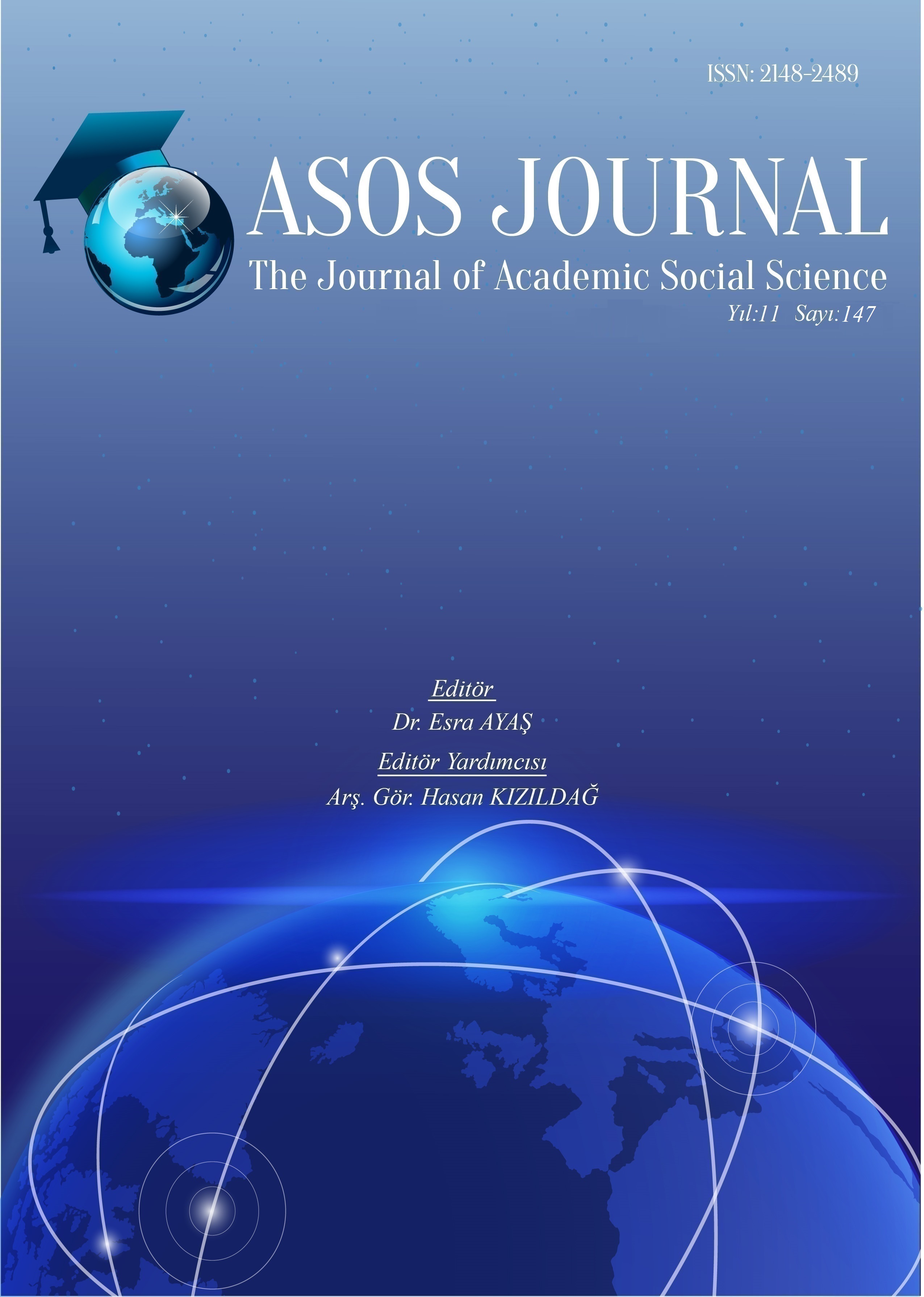Author :
Abstract
Tarih boyunca hemen bütün milletler kendi aralarında ve kendi içlerinde farklı gördükleriyle ilgili farklı kelime ve ifadeler kullanmışlardır. Bununla beraber bir yöreye has olan veya orada üretilen değişik ürünlerin de bir bölgeye veya millete mal edilebildiği de görülmektedir. Bunlarla beraber yaşayış, coğrafi özellikler, kültür farklılıkları, harpler gibi birçok sebep bu kelime ve ifadelerin üretilmesinde rol oynamaktadır. Çalışmada nitel aratırma yöntemlerinden doküman analizi ve tarama yöntemi kullanılmıştır. Bu araştırmada Türklerle ilgili Güney Asya'daki altı millet ve dillerindeki toplam 124 kelime ve ifade -biraraya getirilmiştir. İkinci kısımda ise Türkiye Türkçesinde anılan milletlerle ilgili 123 kelime ve ifade sözlüklerden taranarak toplanmıştır. Her iki listede de tarafsız, negatif ve pozitif şeklinde bir tasnife gidilmiştir. Güney Asya kısmındaki liste sekiz, Türkiye Türkçesi listesi ise dokuz alt başlıkta tematik bir tasnife tabi tutulmuş ve grafiklendirilmiştir. Hem kelime-ifade listelerinin hem de tematik tasnif grafiklerinin yorumları tarafsız bir şekilde yorumlanmaya çalışılmıştır. Her iki derleme listesinde de tarafsız kelime ve ifadelerin fazla olduğu tespit edilmiştir. Elde edilen neticelerin sebepleri irdelenmeye çalışılmıştır.
Keywords
Abstract
Throughout history, almost all nations have used different words and expressions to describe what they see as different among themselves and within themselves. However, it is also seen that different products that are unique to a region or produced there can also be attributed to a region or nation. In addition, many reasons such as lifestyle, geographical features, cultural differences and wars play a role in the production of these words and expressions. Document analysis and scanning methods, which are qualitative research methods, were used in the study. In this research, a total of 124 words and expressions about Turks from six nations and languages in South Asia were brought together. In the second part, 123 words and expressions related to the nations mentioned in Turkey Turkish were collected by scanning from dictionaries. In both lists, a classification was made as neutral, negative and positive. The list in the South Asian section has been thematically classified and graphed under eight subheadings, and the Turkey Turkish list under nine subheadings. An attempt has been made to interpret both word-expression lists and thematic classification charts in an unbiased manner. It was determined that there were many neutral words and expressions in both compilation lists. The reasons for the obtained results were tried to be examined.





